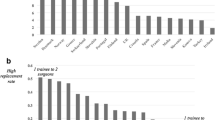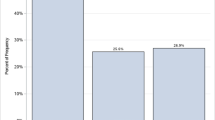Abstract
Orthopaedic surgical training in Nepal began in 1998, and four major centers now produce between 15 and 20 graduates annually. The duration of the training is four years in one center and three years in the remaining centers. Trainees have adequate trauma exposure. The major challenges include: tailoring training to suit local needs, avoiding the dangers of market driven orthopaedic surgery, adequately emphasizing and implementing time honored methods of closed fracture treatment, and ensuring uniformity of exposure to the various musculoskeletal problems. Training in research methods needs to be implemented more effectively. The evaluation process needs to be more uniform and all training programs need to complement one another and avoid unhealthy competition. Training for nonorthopaedists providing musculoskeletal care is virtually nonexistent in Nepal. Medical graduates have scant exposure to trauma and musculoskeletal diseases during their training. General surgeons provide the majority of trauma care and in the rural areas, health assistants, auxiliary health workers and physiotherapy assistants provide much needed basic services, but all lack formal training. Traditional “bone setters” in Nepal often cater to certain faithful clientele with sprains, minor fractures etc. A large vacuum exists in Nepal for trained nonorthopaedists leading to deficiencies in prehospital care, safe transport and basic, primary emergency care. The great challenges are yet to be addressed.


Similar content being viewed by others
References
Bhattarai MD. Knowledge, skill and approach in postgraduate education. J Nepal Med Association (JNMA). 1999;38:95–99.
Bhattarai MD. Time to act: strengthening postgraduate medical education in Nepal. J Nepal Med Association (JNMA). 2001;40:I–I.
Debas HT, Gosselin R, McCord C, Thind A. Surgery. In: Jamison DT, Breman JG, Measham AR, Alleyne G, Claeson M, Evans DB, Jha P, Mills A, Musgrove P, eds. Disease Control Priorities in Developing Countries. 2nd ed. New York, NY: Oxford University Press and the World Bank; 2006:1245–1259.
Dixit H. Nepal’s Quest for HEALTH (Health Services of Nepal). 3rd ed. Kathmandu, Nepal: Educational Books Publishing Ltd; 2005:110–113.
Gosselin RA. War injuries, trauma, and disaster relief. Orthopaedic surgery in the developing world. Techniques in Orthopaedics. 2005;20:97–108.
Government of Nepal National Planning Commission Secretariat. Central Bureau of Statistics Web site. Available at: http://www.cbs.gov.np/index.php. Accessed May 2008.
Karki DB, Dixit H. An overview of undergraduate and postgraduate medical education in Nepal and elsewhere. Kathmandu Univ Med J (KUMJ). 2004;2:69–74.
Rang M. The Story of Orthopaedics. Philadelphia, PA: WB Saunders Company; 2000:2–9.
Acknowledgments
We thank Dr. Om Prasad Shrestha for his secretarial assistance.
Author information
Authors and Affiliations
Corresponding author
Additional information
The author certifies that he has no commercial associations (eg, consultancies, stock ownership, equity interest, patent/licensing arrangements, etc.) that might pose a conflict of interest in connection with the submitted article.
About this article
Cite this article
Banskota, A.K. Musculoskeletal Training for Orthopaedists and Nonorthopaedists: Experiences in Nepal. Clin Orthop Relat Res 466, 2369–2376 (2008). https://doi.org/10.1007/s11999-008-0370-9
Received:
Accepted:
Published:
Issue Date:
DOI: https://doi.org/10.1007/s11999-008-0370-9




